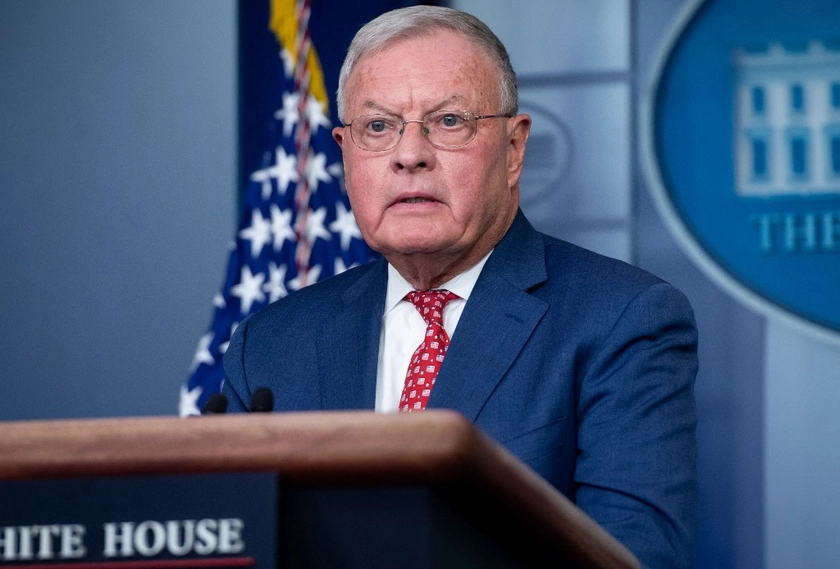The Senate bill that tied funding for Ukraine to cash for the border and Israel has been declared dead on arrival in the House and is stalled in the Senate. House Speaker Mike Johnson (R-La) held out hope for eventual funding, however: “We’ll talk about the Ukraine measure going forward. That’s not been abandoned.”
But whatever bill passes is not likely to look like the current Senate version. Spending $60 billion on a foreign country during an election year could end several Washington careers. However, as Speaker Johnson also said, “We can’t allow Vladimir Putin to march through Europe.”
JOIN US ON TELEGRAM
Follow our coverage of the war on the @Kyivpost_official.
It is time to look at the war from a different perspective. Congress should mandate a new strategy. Rather than push the US toward bankruptcy by spending without end, we should tell Ukraine to target the funding of Putin’s war machine. Ukraine’s military intelligence agency, the HUR, is well positioned to accomplish that mission. The HUR has an impressive record of victories against strategic military and energy targets deep inside Russian territory.
Cut Putin’s Energy Revenue
The lifeblood of any war is money, and Putin derives his money from selling fossil fuels. Reductions in American energy production has driven up the world price of oil and gas, while simultaneously opening up international markets to be supplied by Russian production. This has given Putin the windfall he needs to finance his military adventurism.
Putin in Camouflage Visits Kursk as AFU Battles Rage in Sudzha’s Suburbs
US policy makers should take note of the dramatic successes of this small, underfinanced military organization. They should encourage Ukrainian President Zelensky to use the HUR for attacks specifically targeted to cripple Putin’s energy production and export facilities. Attacks on Russian energy infrastructure could rapidly alter the military and financial balance of power.
A History of Clandestine Victories
If Putin is deprived of the foreign currency he needs to purchase weapons and ammunition, that would quickly erode his war-making ability, and give relief to the other Ukrainian forces fighting to maintain the front lines.
Could this strategy succeed? The HUR has already won many clandestine victories, both near the border and thousands of miles away. A simple cost-benefit analysis of these operations compared to ongoing trench warfare supports a radical change of course.
Here are a few examples of successful attacks: Just days ago a HUR saboteur blew up a Su-34 fighter jet at the Shagol airfield in Chelyabinsk, which is over 2,000 kilometers (1,300 miles) behind the front line. Also this month, HUR drones hit a fuel and energy compound in Russia’s Oryol region, south of Moscow. The strikes destroyed fuel storage tanks and part of the electricity grid.
Last month, the target was a rail tunnel in Buryatia, the only viable supply line between Russia and China. This line brings fuel, rockets, and artillery rounds from North Korea and China to supply the Red Army. It is over 6,500 kilometers (4,000 miles) inside Russian territory. Days after the tunnel was destroyed, another blast blew up a bridge over a deep gorge on the only bypass for the tunnel. Both blasts destroyed shipments of military jet fuel and temporarily disabled the transport routes.
Just today a Ukrainian drone attack caused significant damage to Russia’s largest metallurgical plant in Novolipetsk, whose products feed many enterprises involved in the manufacture of the Kremlin’s missiles, rockets, artillery and drones, among other things.
These victories are not new. They have been taking place since the beginning of the war. Throughout 2022, the HUR changed the geography of the war by launching drones at air bases hundreds of miles inside Russia.
The achievements also have serious policy implications. They expose the emptiness of Putin’s threats to use massive nuclear retaliation for any attack inside Russia. Russian retaliation for HUR attacks deep inside Russian territory has been limited to conventional missile and artillery attacks on civilian areas. Ukrainian forces have been emboldened by these successes, and Russian commanders have been demoralized and replaced.
Assassination Attempts Against the GUR Director
Vladimir Putin is keenly aware of the role played by the HUR, and has tried on several occasions to assassinate the chief of the service, Kyrilo Budanov. Recently both Budanov and his wife were targets of separate assassination attempts. Russia’s clandestine forces have influence inside Ukrainian circles, and are sure to use it to aid the service chief’s bureaucratic opponents.
US and EU policy makers would be wise to look at the record of the HUR and mandate support for its efforts. As Washington counts every dollar sent to Ukraine, it should consider directing some of that money specifically to clandestine efforts to deprive Putin and his “special military operation” of its revenue stream. We should spend our money to bankrupt Putin, not ourselves.
Bart Marcois is a former career U.S. diplomat, and was the Principal Deputy Assistant Secretary of Energy for International Affairs.
The views expressed in this opinion article are the author’s and not necessarily those of Kyiv Post.
You can also highlight the text and press Ctrl + Enter











